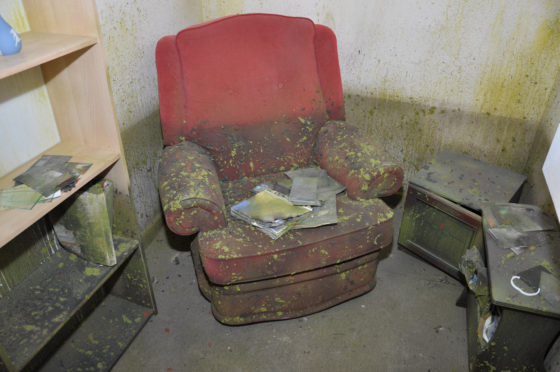Exposure to flood waters can be a health hazard. Workers and homeowners need personal protective equipment to avoid exposure to sewage, chemicals, injury.

Photo credit: iStock.com/Mavermick
When I started writing this, I could hear a heavy downpour of rain outside. Worried about drivers going through huge puddles, I tweeted a link to my post Don’t hydroplane in rain. (That’s on Twitter, where I’m @SpeakinofSafety.)
But it’s not just roads that get flooded. A friend of mine had to leave work that day to deal with flooding in his basement suite.
As bad as this is, it’s nowhere near as bad as what many communities in B.C.’s interior experienced this past May and June. Local governments declared states of emergency and ordered people to evacuate their homes when widespread flooding made them unsafe. And more recently residents of northwest B.C. have been dealing with clean-up after heavy rainfall and flooding.
Protection from flood waters
Flood waters are often full of waste materials and chemicals that can make people sick. HealthLinkBC explains that during a flood, “water leaves its normal course and washes over land, and may come into contact with farmyards, manure, garbage, overflowing septic systems and other sources of contamination and disease.”
Because of the risks to your health, it’s best not to treat flood clean-up as a DIY project if the damage is extensive. Hire (or have your insurance company hire) a qualified flood restoration company.
Depending on the situation, people could need different types of personal protective equipment (PPE) for cleaning up after a flood. In Flood Cleanup: Prevent Mould Growth, the Canada Mortgage and Housing Corporation tells homeowners to assemble equipment and supplies including disposable gloves, rubber boots, goggles, pails, mops, sponges, and plastic garbage bags. Geoff Clark, an occupational hygienist at WorkSafeBC, adds that anyone in contact with wet, mouldy material should wear nitrile gloves (under heavy work gloves, if they use those).
Workers who clean up after floods may need more specialized PPE, depending on site-specific conditions, hazards, and tasks. NIOSH has a web page on Guidance for Personal Protective Equipment and Clothing for Flood Cleanup Workers. Examples of PPE include electrically insulated boots with steel toes, cut-resistant work gloves, and goggles or safety glasses with side shields.
For more information, see:
- Cleaning up after the flood from Emergency Management BC
- Flood Water After a Disaster or Emergency from the U.S. Centers for Disease Control and Prevention


